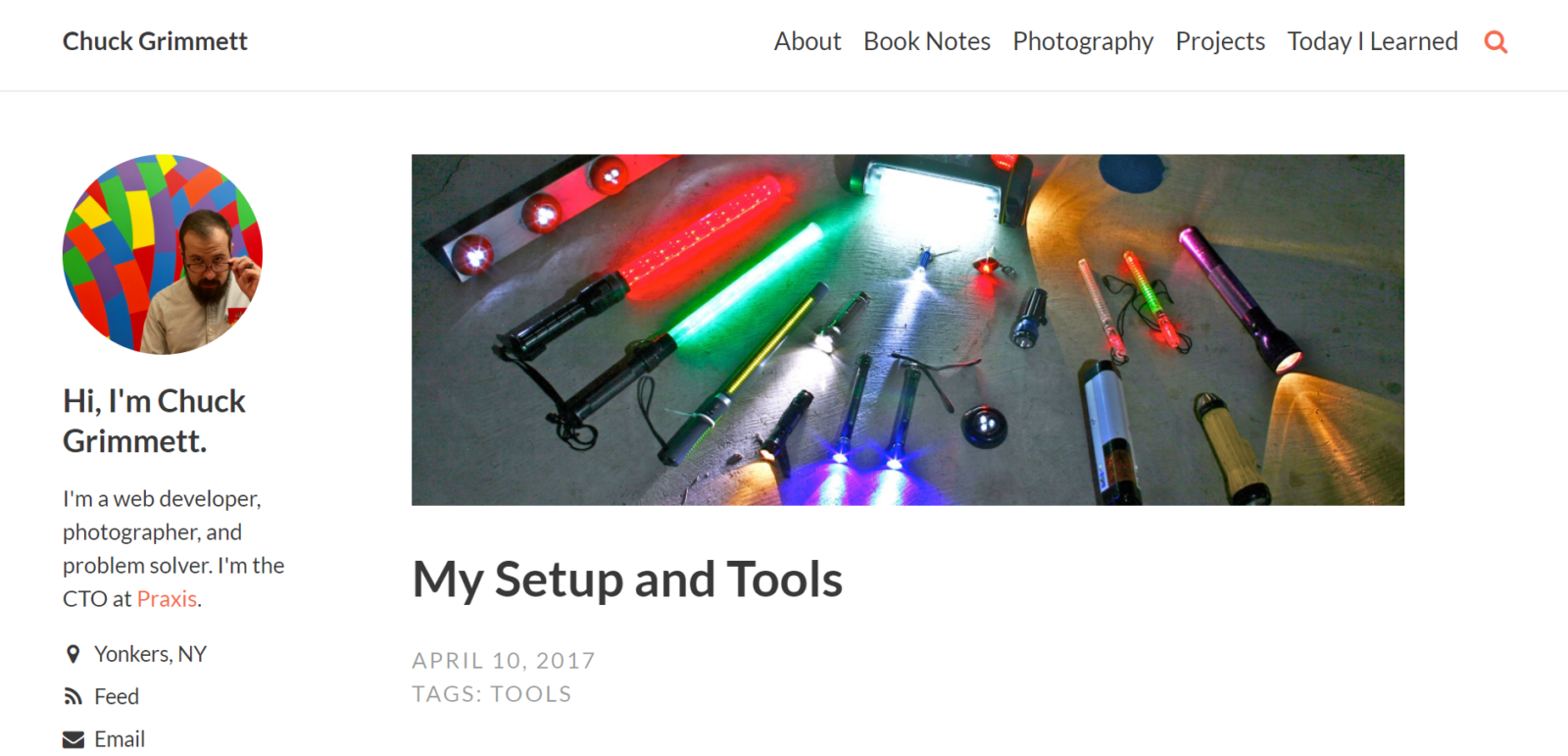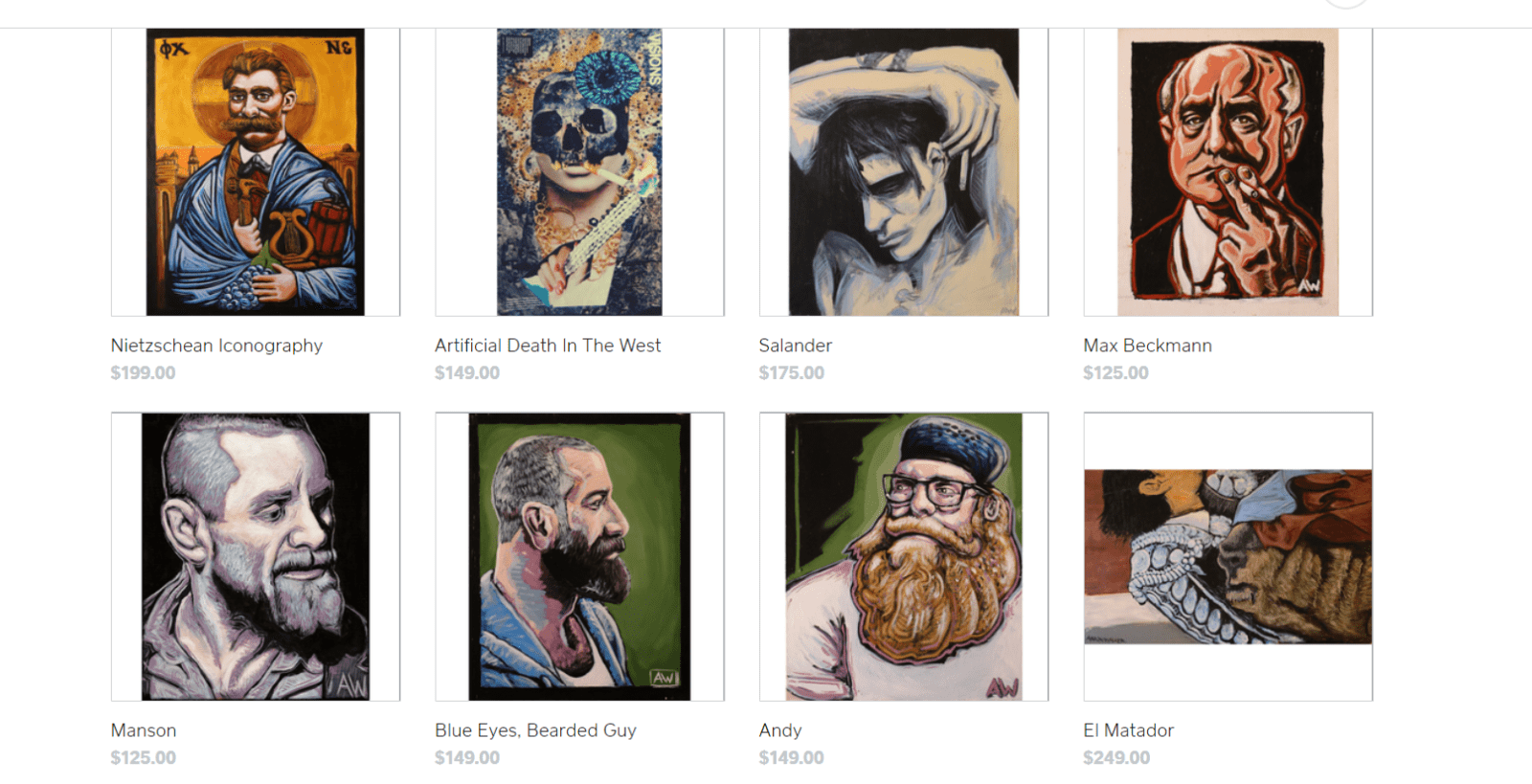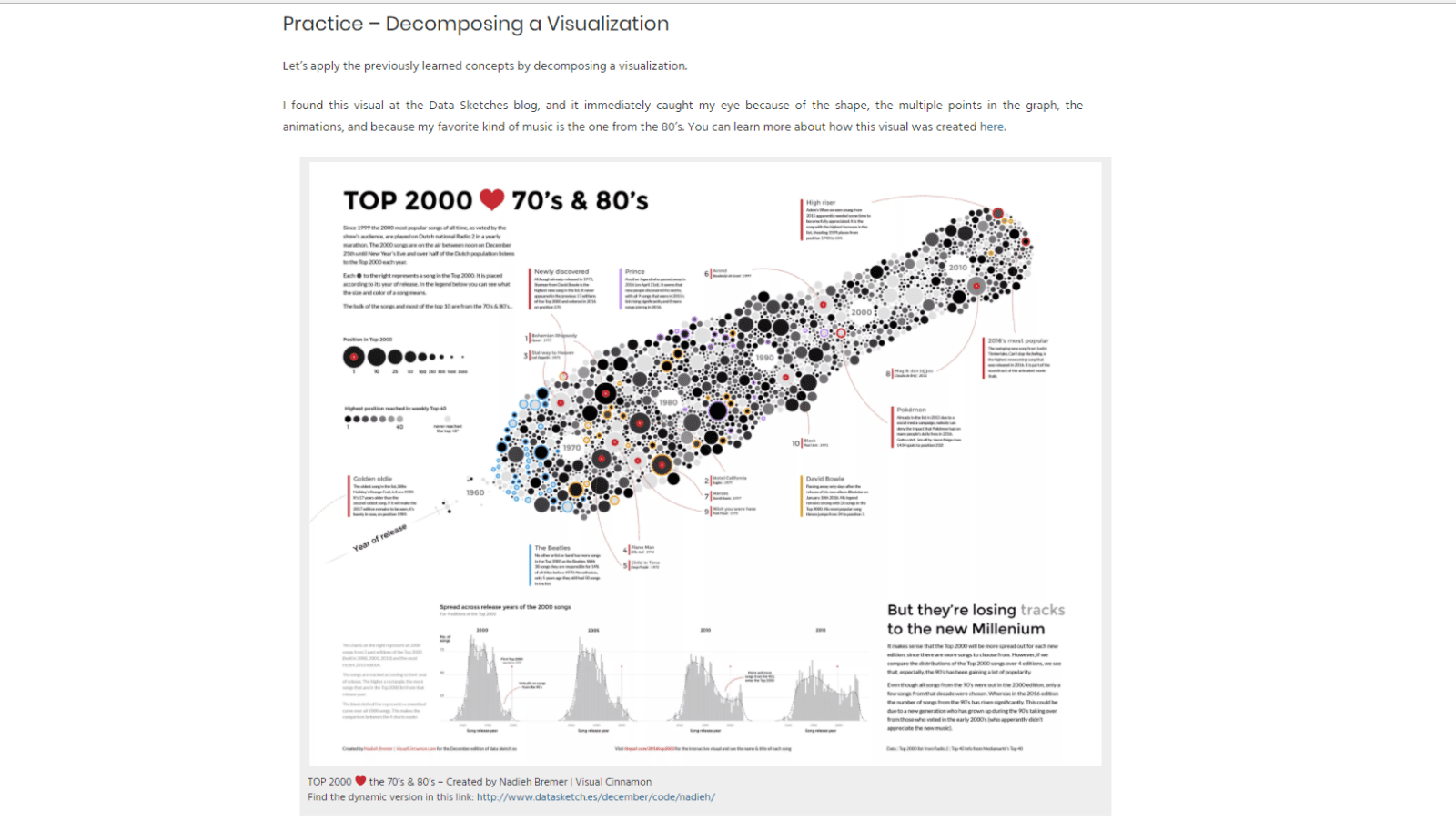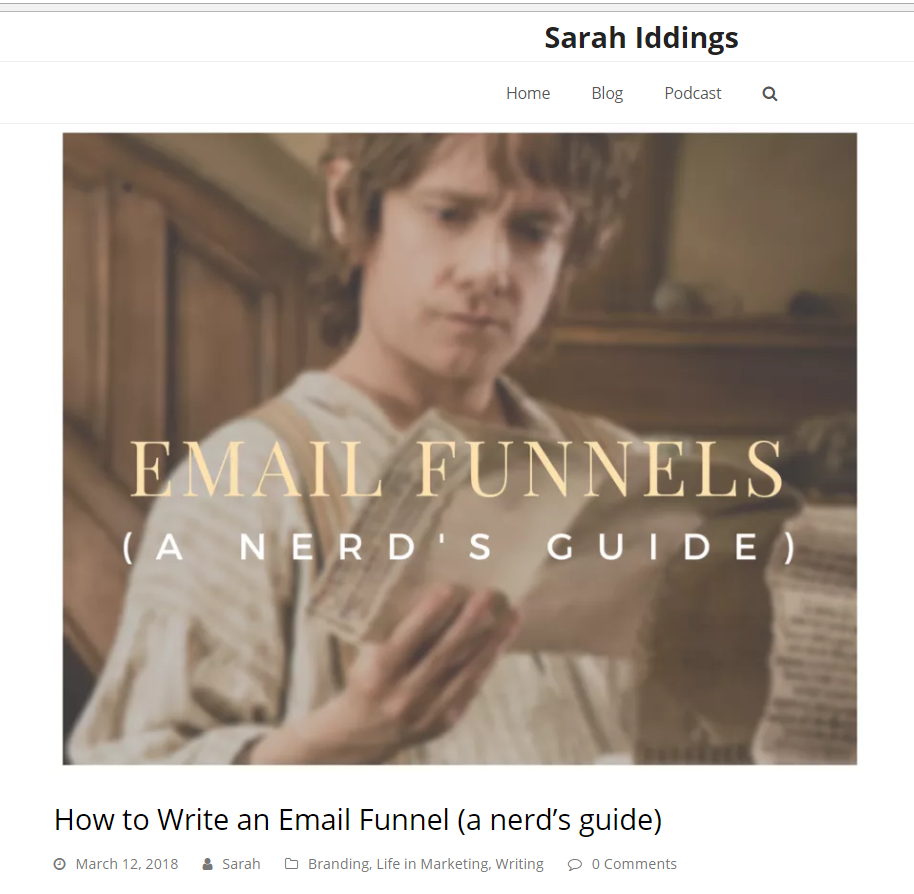A Praxis participant recently asked me for some tips on how to signal their ability to create value through their writing. More specifically, they wanted to know how to do this without relying on self-help posts that claim to show people the way to enlightenment.
As preparation for our advising session, I documented five categories of posts along with some examples of how to create value through blog posts. Every single example is from a Praxis participant or graduate.
Here are my five ways:
1. Show Your Work
Everyone has activities and responsibilities that define their day, but what does the process of managing and doing those things look like? Showing your work is the act of detailing or describing your personal answer to this question. You can do this by sharing your work setup or by walking someone through a creative project you completed.
Here are a few examples:
James Walpole’s approach to work

Taking his cue from the Lifehacker How I Work series, James composed this blog post to provide insights into the mindset and methodologies behind his daily work activities. In this fun to read post, James shares his philosophy of work, tips for saving time, book suggestions, music recommendations, and more.
How it adds value: It’s nearly impossible to read this blog post without seeing James as the kind of person who’s pretty consistent at managing time, being reliable at work, and consuming lots of interesting content. If someone were interested in hiring James, this would be a great way for them to get a preview of his personality, working style, and knowledge of common tools.
For a slightly different take on writing about your approach to work, consider Chuck Grimmett’s My Setup and Tools post.
Chuck’s tools & techniques

Instead of emphasizing the philosophical side of work, Chuck highlights the tools and techniques he uses to manage the various things that command his attention throughout the day.
How it adds value: By looking at Chuck’s post, we can easily see that he’s meticulously attentive to detail and that he has commanding knowledge of a wide variety of tools. Both of these qualities might be of great interest to an employer or colleague. By writing this blog post, he signals details about himself that wouldn’t be captured on a resume and he increases the probability that he’ll be respected as someone who knows what he’s doing. In addition to creating possible opportunities for himself, he introduces a plethora of tools that anyone who’s looking to improve their productivity can use.
in addition to showing your work by describing your philosophy or setup, you can also walk people through your process of creating something. This is precisely what Aaron Walker did in his artwork project write-up.
Aaron’s Artwork Project Write-up:

Aaron loves to make art. He has a plethora of prints, paintings, and drawings in his online store. After struggling to find ways to market his artwork, he stumbled upon a creative idea: create a series of videos where he shares the story behind each painting.
What inspired him to paint that particular picture? What struggles did he face along the way? How long did it take him to finish? What materials did he use? Aaron set out to answer these questions by gathering together some fellow Praxis participants and having them interview him about each work of art.
Aaron published a new video every day over the course of an entire month. After completing his project, he published a write-up in order to share why he did it, how he made it happen, what he learned, and what his next steps are.
How it adds value: It’s one thing to do a creative project (ie. make paintings or record a bunch of videos). It’s another thing frame your work in a way that makes it possible for the average person to understand. When most people go to art galleries and museums to look at interesting artifacts, they look for the little placards next to each exhibit in order to make sense of what they’re looking at. By doing this project write-up, Aaron gives his audience a much deeper appreciation for the effort and thought behind each piece.
This write-up not only helps his sales, but it creates an entertaining experience for those who admire his work. Additionally, he’s providing other artists with a road map for how to showcase their creations in a way that goes beyond sitting back and hoping someone notices their work. Last but not least, he signals his ability to do difficult things in a consistent and sustained manner. Lots of creative-types know how to work when they feel inspired, but Aaron pressed through to complete this project even on the days when he felt like skipping.
2. Learn Out Loud
If you’re reading this blog post, the chances are pretty decent that you’ve taken an online course, attended a lecture, or read a book before. If that’s true of you, then this category is a source of low hanging fruit for blog post ideas. Learning out loud is simply the process of capturing information related to the interests you pursue and combining them with your own commentary. The best part about these kinds of posts is that you don’t need to finish anything before you begin. You can start right in the middle of your learning process and go from there. No expertise required.
Here’s a great example:
Claudia Gerez’s Data Visualization Course

Describing her inspiration for the learning project, Claudia writes:
I’ve always used visualizations with a practical purpose, to make sense of information, and to communicate results. I don’t recall giving a second thought to the aesthetics of my plots. But then I found the book Dear Data and I couldn’t help but notice the beauty in the information presented. Later, I came across the blog Data Sketches, and my mind was blown away by the incredible imagination of the authors and the beautiful and complex projects that they built with data.
Lisa Charlotte Ross wrote a few posts about the meaning and beauty in Data Vis and Data Art. She states that the ultimate goal of Data Vis is to convey information, to be insightful, and to increase “understanding” of a dataset. I completely agree with her, as well as with the point that she makes about how beauty can enhance meaning.
That said, today I’m taking a first step towards learning more about data visualization with the goal of making my graphs and plots a little bit “better looking.” I signed up for the course Data Visualization and D3.js at Udacity, and I’m planning to share what I learn here. I’ll start writing about it today.
How it adds value: Claudia’s use of screenshots and study notes provide a visually appealing and highly informative tour of what she’s learning. What’s important to note is that she’s not writing as an established expert. And yet, she ends up signaling a high level of intelligence, persistence, curiosity, and creativity simply by sharing her journey through the course. She not only creates value for herself, but also for anyone who may consider taking similar courses in the future.
You can literally learn out loud with anything. If it can be learned at all, it can be learned openly and transparently. My colleague Derek Magill recently attended a book signing by Nassim Taleb. Lots of people attend events like these, but they limit their imaginations to taking selfies with the authors. Derek went one step further and shared lessons and insights from the author’s talk.
I don’t attend many lectures, but I enjoy listening to podcasts and checking out the latest blog posts by authors I follow. As I’m consuming content, I keep a document open and I collect my favorite quotes. Once I’m done digesting a particular resource, I write down my own thoughts and reflections. Then I share them on my blog.
Neither Derek’s example nor mine requires any complex charts or graphs. We simply documented the things we were learning and shared them with the world. With posts like these, we signal our passion for ideas and our willingness to put forth some effort in the learning process while also introducing our audiences to ideas, authors, and resources they may find useful.
You can do the same.
3. How-To Articles
If you’re reading this blog post, that’s proof that you at least know the following two things: how to find resources online and how to extract meaning from the things you read. That may not sound like much, but here are three things you should consider: 1) you probably know a lot more things that you take for granted 2) there are other people who don’t know some of the things you know and 3) whatever you know, you can show.
Whenever someone asks me for blog post suggestions, I always tell them to start with the things they know. What tools or methods do you use to do your work, to make travel arrangements, to prepare food, to plan a hike, to capture creative ideas, to change a flat tire and so on? Write about them. Even if a thousand other people have already written about the same thing, write about it anyway. Writing about the things you know is a unique part of the learning process as it helps you clarify your own thinking. And it also signals your ability to present what you know in a clear and organized manner.
Here’s a great example:
Chuck Grimmett’s Kindle Optimization Tips

In my show your work examples at the beginning of this post, we were able to get a glimpse of the tools Chuck likes to use in his daily life. In his post on Kindle, Chuck takes things one step further and teaches the reader how to do some useful things with those tools. In his post, he’s not merely showing his work nor is he learning out loud. He’s taking what he knows and translating it into value-creation by imparting that knowledge to anyone willing to learn. He walks the reader through user-friendly explanations for how to take screenshots, how to see your reading statistics, how to export highlights/notes, and how to remove ads.
How this adds value: Posts like this add value to the company behind the product because it showcases and simplifies some of its more non-obvious features. It also adds value to anyone who owns a kindle. And from a signaling point of view, Chuck is implicitly showcased as a great teacher, team player, and technician. Complement Chuck’s kindle post with his excellent instructional post on how to get work done.
For a contrasting style, consider this post on email funnels from Sarah Iddings.

Sara never had much interest in automated email funnels, but her marketing apprenticeship inspired her to learn. After only a few months in, she’s picked up on some highly valuable insights. In addition to doing a stellar job at her startup, she’s facing outward and helping other people in her field understand some important basics about understanding the customer’s journey and effectively dealing with customer pain points. She even concludes with a couple of solid book recommendations for those interested in further exploration.
How this adds value: In a similar vein as Chuck Grimmett’s insights on kindle, Sarah’s post simultaneously offers guidance to beginners and signals her knack for bringing other people up to speed on the things she knows. Having someone on your team who knows things and loves explaining those things is a huge asset. A post like this is a great signal towards that end.
For a less technical example, see Derek Magill’s informative post on how to approach daily blogging.
4. Product Reviews
Everyone has products and services they love to use. If you look around your house or apartment, you’ll find dozens of brands represented in your closets and cabinets. By writing about these things you get to participate in two of the most valuable activities in the marketplace: 1) making a service or product look good and 2) helping potential customers make informed choices.
Here’s an example:
Kaity O’Keefe’s Nike Review

Kaity loves fashion. She enjoys staying up-to-date on the latest styles and trends. She also loves marketing. So she decided to combine those interests and do a collection of blog posts where she reviewed some of her favorite fashion and health products. One of her goals was to practice her ability to serve clients by getting other people excited about their products.

This post from Nike was a solid start in that direction. She detailed her personal experience with the shoe, shared images of different styles, offered pros and cons for each type, and even provided a link for all the products she referenced.
Hope Szymanski employs a similar approach in her book review of How I Raised Myself From Failure to Success in Selling.
How this adds value: Like Kaity and Hope, we all have products and services we use throughout the day. Writing about the ones that excite you is a great way to practice your marketing and sales skills. There’s always a need for people who know how to promote things or simply talk about them from a customer’s perspective. Posts like this are great at signaling that ability.
5) Resources Page
For any given field of study, there are a litany of resources to scour through. This can be quite intimidating for the beginner. A great way to solve this problem is by creating a resources page. This is what Jorgen Phillips did for student developers in his post Great Resources for Student Developers.
Jorgen Phillips Resource Page.

The layout on Jorge’s page is pretty straightforward. He simply provides a list of resources that can be obtained with a student discount. He does a great job at describing what the tool does, making a brief case for why it matters, and letting his readers know where to find it.
Another great example of this is Derek Magill’s Bitcoin Cash resources page. On this page, Derek provides a rather exhaustive and frequently updated list of resources. From the basics of cryptocurrency to debates over the lightning network, Derek covers it all.
In both of these examples, Jorgen and Derek simply take their own interests and share resources related to them in an organized manner.
How this adds value: Everyone needs resources. If you can find a way to curate them and compile them in a single location, you create immense value for resource providers (you’re essentially marketing their materials), researchers (you’re making their job easier), and yourself (you’re building your reputation as a learner and a guide).
Creating value is mostly about your mindset
My advice to anyone who wants to use their blog to create value is this: don’t obsess too much over the “right” topic. Start with what you’re interested in and push yourself to say something that can help others solve problems, make decisions, and get more value out of their lives. You don’t need to turn every post into an inspirational lesson on how to find happiness and inner peace.
Every single thing in your experience can be written about in a way that makes someone else’s life easier or more fullfilling. If you can develop a mindset that sees ordinary things from that angle, you’ll be on the road to creating value through your blog posts in no time. Hopefully, my examples can help you get started.
March 13, 2018
